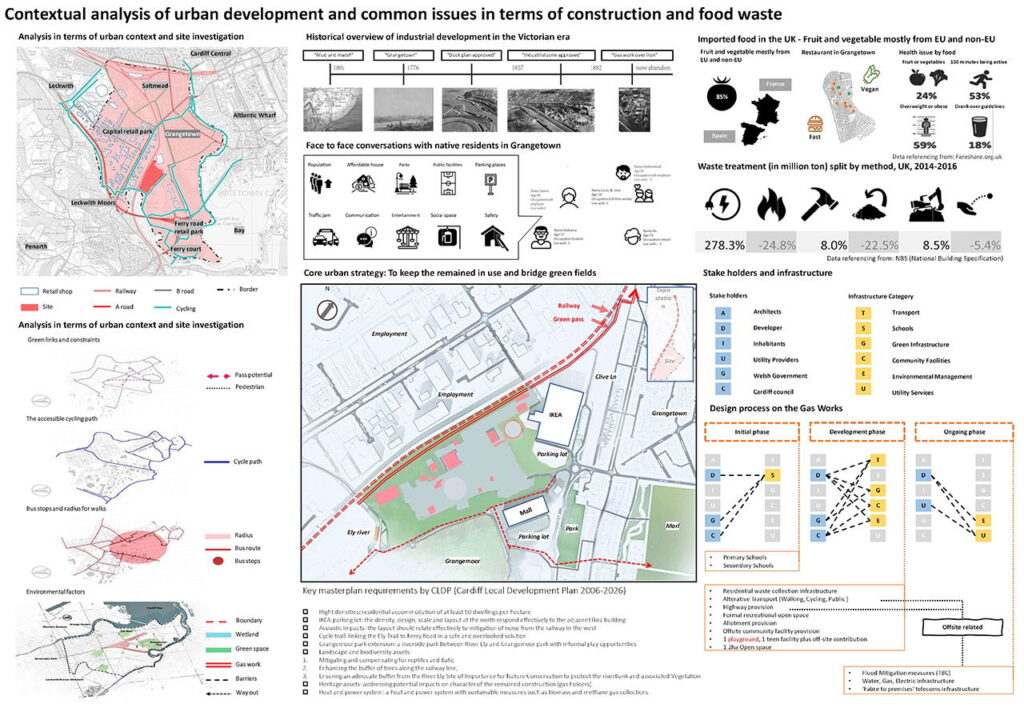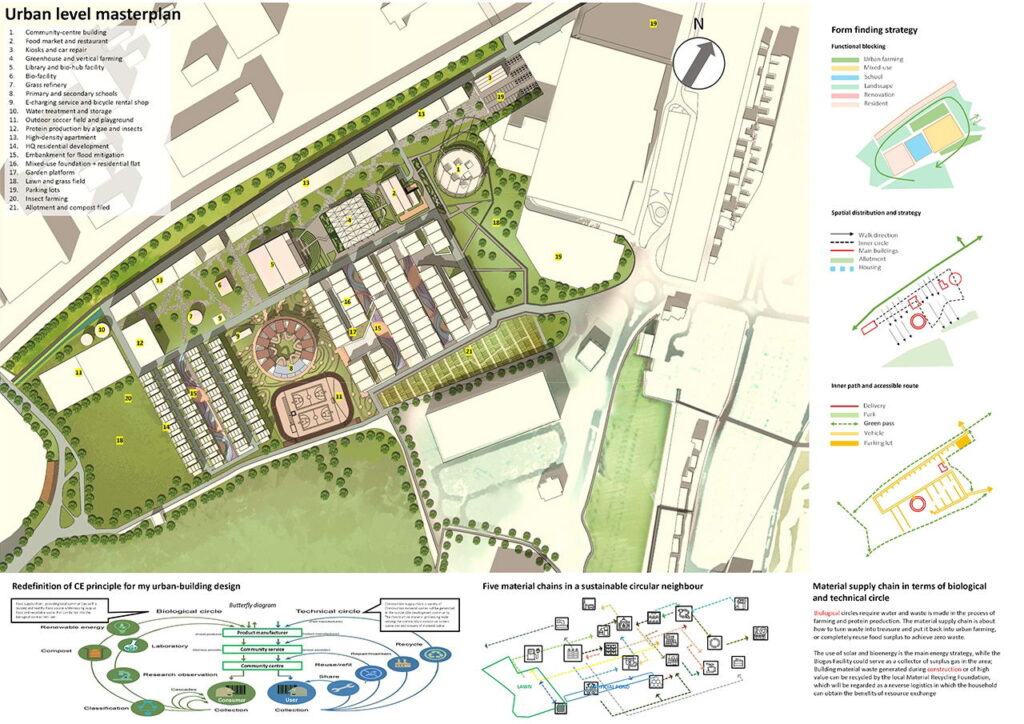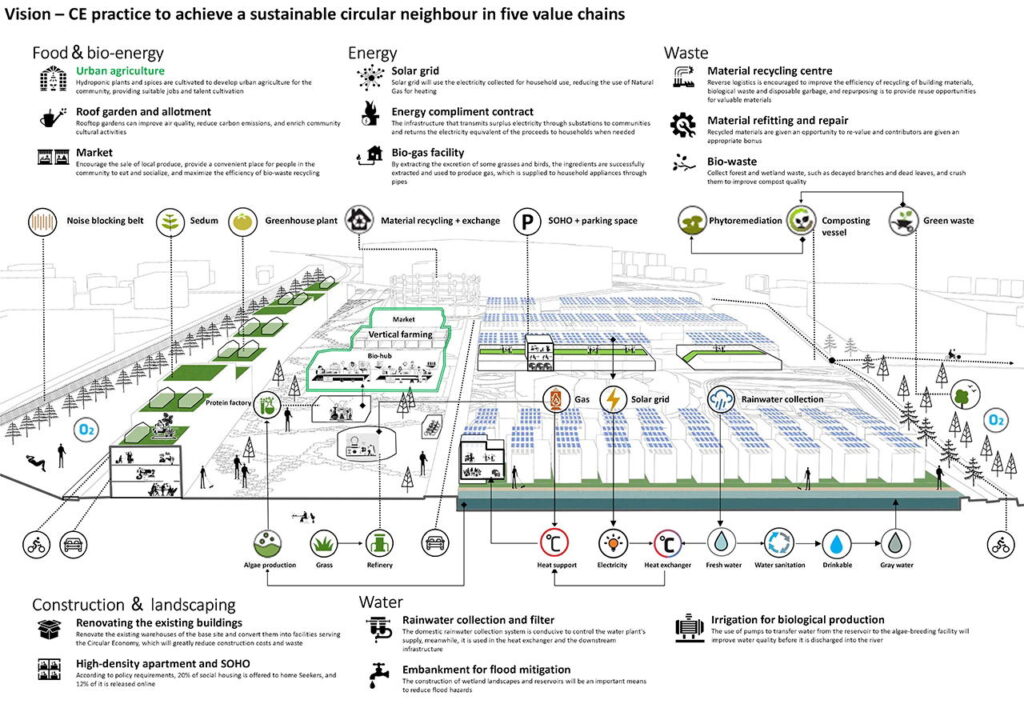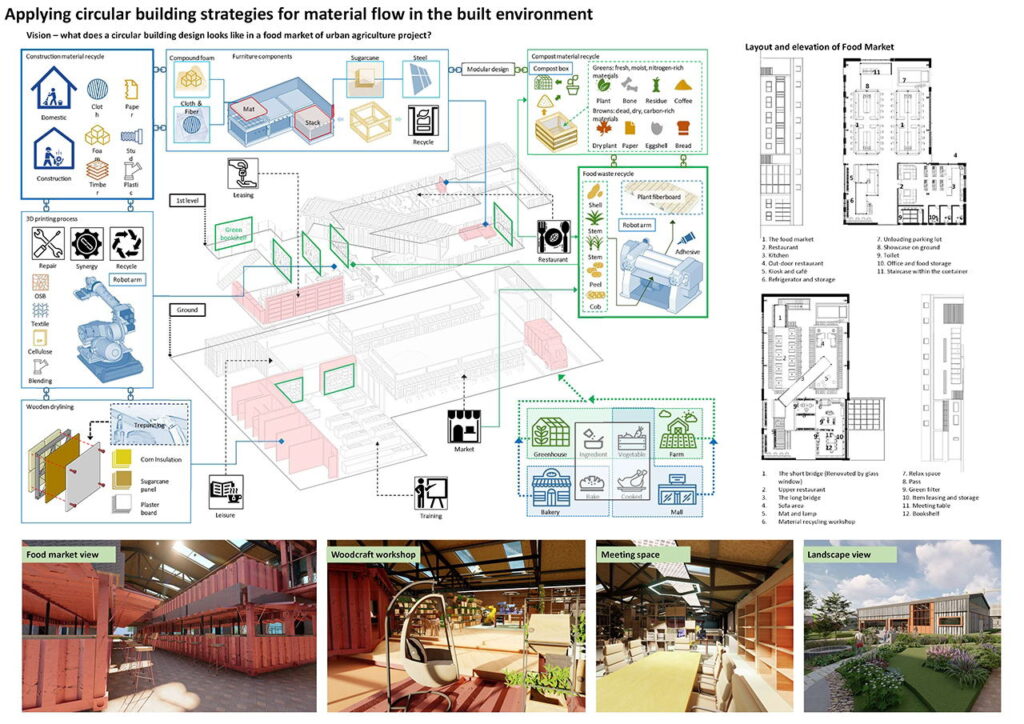A sustainable circular community in Gas Works, Cardiff

As a metropolic that had developed coal chains in the past, Cardiff had a large industrial area that provided explosive growth for the local economy at the time. A typical example is the Grangetown community, which used to have equipment and bases such as gas work, rope work, brick factories and so on. Meanwhile, it developed gradually from workers’ housing. Now, in the context of global warming, planners need to think in terms of environmental change and new economic models about what is the most appropriate way to develop a new community and its surroundings.

Circular Economy (CE) is also originated from industry. It is a thinking about material production, consumption and recycling of products, but it has caused ripple effects in construction and urban planning. As the case study on the right shows, the CE test may help planners think in terms of resource exchange and reuse, how to develop economies, encourage innovation and employment without sacrificing the environment.
My research purpose is how to draw lessons from the design of the CE method and train of thought to lead a more affinity of the community environment, realize resources and nutrient recycling is with the research question.

In terms of planning, I refer to the CASE of CE at Urban level and try to realize a blueprint of sustainable economy based on my understanding of community needs. Initiatively, links between green Spaces should be prioritized in order to contiguous wetland parks. Secondly, considering the railway on the west, high-rise housing and the flow line on the east are used to guide the pedestrian to the park, while the loop flow line inside breaks the straight linear relationship. Finally, in order to maintain the integrity of the public areas and the greening, the vehicle line totally presents an S-shape; the planning of infrastructure refers to the reserved building location and the thinking of the community supply chain.


In terms of construction scale, my main design purpose is to use food growing culture to realize Circular design. Therefore, in the project of Urban Agriculture, I designed a food market with the reference of “Butterfly Model” to waste biological materials and reuse building materials on the site. The design of the container can be observed from the plane, but it is important to design a set of CE material cycles for the daily use of the building and ensure that they are feasible.
Contact: chenc71@cardiff.ac.uk












